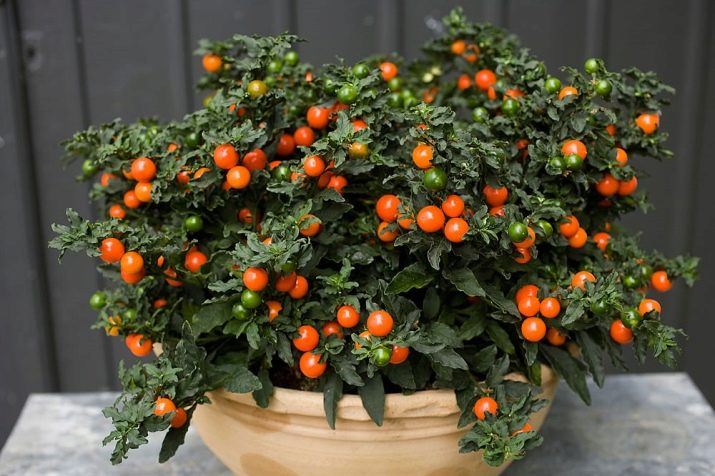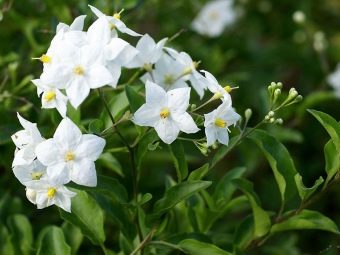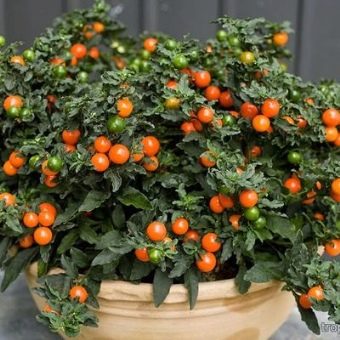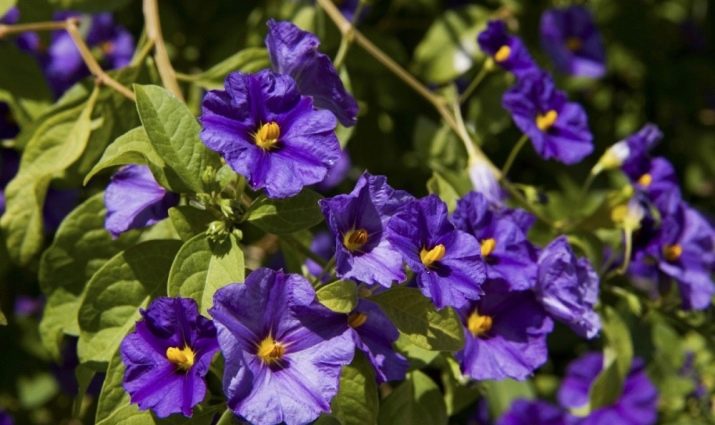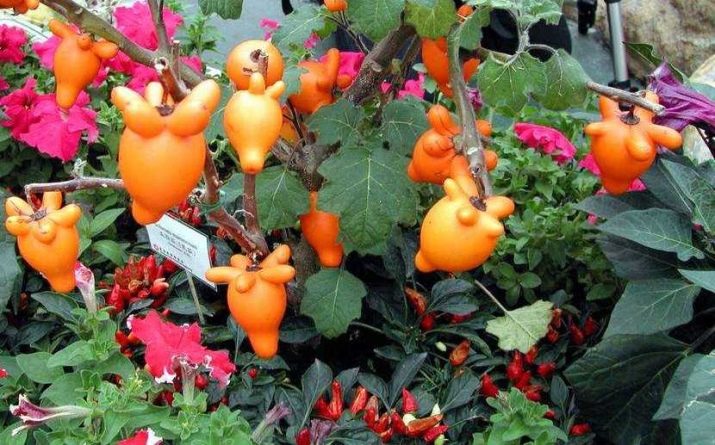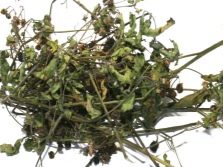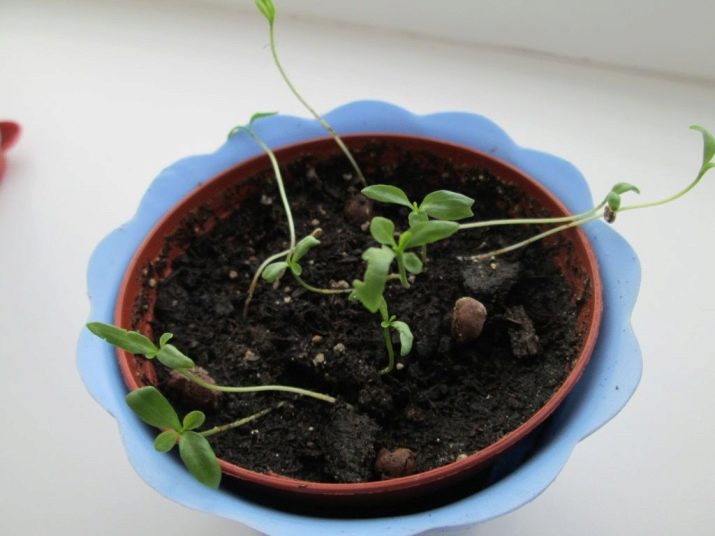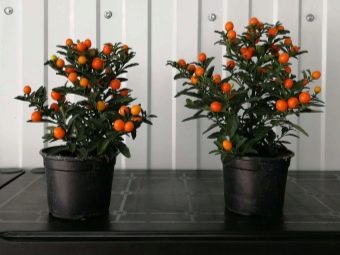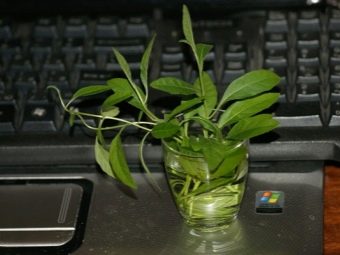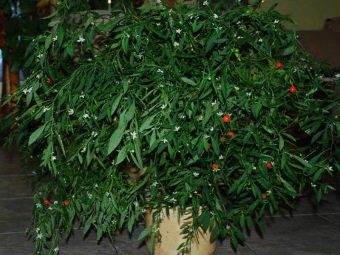Room nightshade: description and details of growing a plant
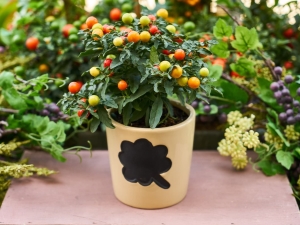
Many tend to grow at home not simple flowers, but interesting and unusual plants.Those who are interested in the decorative inhabitant of the window sill should be interested in the nightshade. This plant has an unusual appearance, decoration of which are berries, giving the bush an elegant look. In order for a culture to grow and fruit properly, it is important to be able to grow it properly.
Plant description
Solanum is a plant that belongs to the genus of nightshade and has more than a thousand varieties. He spread from Ecuador, Peru and the island of Madeira. A large number of this culture can be observed in South America. Nightshade can grow in almost any climate, but prefers regions with a warm climate. In Australia, the number of nightshade has become so large that it has been transferred to the category of weedy culture and is actively fighting it, which is not so easy.
In nature, the plant usually grows up to one meter, at home it is a little over half a meter, but the most common option has become a dwarf nightshade, which is considered a flower and grown in apartments. Its parameters do not exceed thirty centimeters, but otherwise it differs little from the wild variety. The feature is the foliage, which remains green all year round, its color is dark green, and the edges have a wavy shape.
Flowering white flowers that can be collected in small inflorescences or grow singly. The flowering period can take place in any season, and the berries usually appear and turn red in winter. Fruits measure from one to one and a half centimeters and color range from red to rich orange. If we talk about the decorative nature of this flower, then it consists precisely in the combination of dark leaves and bright fruit beads, which are kept on the twigs for a long time, without fading or falling off. Those interested in breeding nightshade should know its main varieties.
- Pertvid - grows about half a meter in height, has green foliage, flowering process is carried out with pale white flowers, from which poisonous berries appear, changing color from yellow to rich red.
- False cross - The main indicators are similar to the previous version, only the height of the plant differs, which can reach one and a half meters. The variety blooms throughout the year, alternately forming fruits that vypvevayut over time. Dwarf variety that is grown at home, usually has a height of no more than 30 centimeters.
- Jasmine - it is distinguished by a winding stem and complex oval-shaped leaves, flowering occurs with the help of white flowers with a blue tint, which are collected in paniculate inflorescences.
- Curly - has a curly stem that can reach five meters in height with oval dark leaves and purple flowers, which are collected in inflorescences.
- Rantonetti variety - is a dwarf tree with small flowers of blue.
- Papillary - received owl name due to the original shape of the fruit, which have an elongated appearance. The bush reaches one meter, has leaves of soft structure, which are somewhat similar to burdocks, and the stems are dotted with thorns. Flowering occurs with white or purple flowers, and the fruits turn red or orange.
Nightshade will decorate the window, especially in winter, when the shrub is completely covered with berries, similar to the Christmas lights. Since there are a large number of varieties, the type of fruit and flower may have different dimensions, color and shape, but the differences are not too significant, so it will be possible to determine the belonging to the genus Solanaceae without any special problems.
Wild-growing and ornamental options usually differ in the dimensions of the plant, if in nature the nightshade is a real tree, then in the conditions of a room it looks more like an ordinary flower. Since in some regions this shrub is a weed, it is important to properly cultivate this crop.False and pepper-type nightshade are the most popular plant varieties, because they are most often seen on sale as well as in people at home.
These species are very different. Different dimensions, different inflorescence, but almost identical fruits. Three-flowered nightshade is especially valuable in a decorative design, as it produces a whole brush of beautiful homogeneous berries, which serve as a wonderful decor for landscape design or premises.
In order to grow the nightshade at home, it is important to know exactly how to plant and grow it, as well as to get acquainted with the culture that poses a certain danger, especially if there are young children in the house.
Can I eat it?
It is impossible to consume the nightshade, this is due to the fact that all its parts are dangerous to human health. It is especially poisonous at the time of the appearance of ripe fruits, which often attract small children and domestic animals. The use of several berries will entail significant disruptions in the work of the stomach, but from the excessive eating of fruits can be fatal.
There are some varieties that can be eaten, but you should not do this without properly preparing the fruit. This plant is very effective in the case of combating various diseases, such as angina, migraine, epilepsy. To get sense of the nightshade, you need to collect from him ripe berries, flowers and leaves, dry them in an open space and store in a dry room, wrapped in paper. Possible uses can be:
- twisting through a meat grinder and mixing with sugar or honey, which effectively helps against severe headaches and relieves epileptic episodes;
- curative decoctions are obtained from the flowers, contributing to the improvement of patients with lung diseases;
- dried leaves that are harvested and dried between July and September can also help with various diseases.
If there is a need to increase the effect of nightshade, it is worth using it with a number of other herbs that combine with it. Without proper knowledge, it is worth refraining from consuming any parts of the plant and not growing it at all if there are children or pets in the room.
Cultivation and care at home
Growing room nightshade is easy, because it feels comfortable on almost any soil, the main condition is only a warm habitat to which the plant is accustomed. Since the culture is decorative and takes up little space, it is usually grown in a pot and placed on a windowsill. In order to get good growth and the presence of bright fruits, it is important to create optimal conditions, which are in a suitable soil. For planting to be successful, it is necessary to prepare alkaline, loamy or clay soils, the main thing is that they should be quite loose.
It is easy to care for a plant, you need to water it in time and provide enough light, but not place it in direct sunlight. In late spring and summer you can place a bush on the balcony or veranda, where there will be access to clean air and good lighting. Another feature that you can learn from gardeners is the need to transplant a bush a year later into a new, more spacious pot. If you put the nightshade in a container smaller than the one that suits him, then the root system has nowhere to develop, and the culture will begin to languish.
Watering the nightshade differs in intensity depending on the season and the ambient temperature, it is brought in quite a bit in the cool water, and in strong heat quite a lot, plus an additional spraying of the foliage, which the bush perceives very favorably.
The most important is flowering and fruiting, because at this time you should be especially careful about the introduction of moisture under the bush, so that the soil does not dry out.A relative problem in the care is the flowering period, which often simply cannot be achieved due to ignorance of certain secrets.
To spring the plant threw out the color, you need in the winter to put it in a cool room and reduce watering. Properly overwintered bush can be cut and formed at will, giving it a variety of forms. Another feature is the fear of drafts, so for the time of airing you need to clean the nightshade in a quiet and cozy place.
Temperature regime is no less important, if in the summer there is no need to create any specific conditions, then in winter it is worthwhile to place a bush in a room where there will be no more than fifteen degrees of heat. The window on which the nightshade will be located is also worth changing from time to time, in the cool season the south side is ideal, where there will be the most light, and in summer, on the contrary, it is worthwhile to place the bush on the opposite side.
For good growth of culture it is necessary to fertilize from time to time. The period of dressings falls in the spring and summer, when nutrients are introduced into the soil twice a month. Best sukanu fit complex fertilizers, as for any flowering plants. In winter, it is not recommended to fertilize the soil, but if the need arises, the procedure is performed no more than once a month. And then it is enough to contribute only half of the amount that is usually used.
Caring for a plant also implies pruning, which is carried out when the bush ceases to bear fruit. With the spring approaching the nightshade, you can see the falling off of the yellowed sheets. To stop this process, it is necessary to apply a pruning that helps to restore the strength of the plant. A special feature of pruning is shortening the main stem, which makes it possible to actively grow in the peripheral processes, which are recommended to pinch the tips.
Those who wish to breed this plant in their home should be aware that cultivation is possible from seeds that are obtained thanks to the fruits stored throughout the active growing season, as well as throughout the winter. To get them, you need to collect only ripe fruits, dry them and keep them dry until spring.
To find out that the nightshade has ripened, it suffices to pay attention to the color of the berries, which turn from green to yellow and, ripening, acquire a full red color.
Features of reproduction of culture
Nightshade breeds in two variants: cuttings and seeds. With the help of seeds, a crop can sow itself, but this requires quite large dimensions of the pot in which it grows. Those sprouts that appear themselves, it is desirable to seed off from an adult bush, when they get a little stronger. You can carry out sowing yourself, for which pick up a container of significant size, in which the seeds are placed. They do not need to be dipped into the ground; it is enough to simply drag the surface with a thin layer of sand.
To put the planting material sprouted, you need to cover it with a film and place in a comfortable environment. The most favorable temperature for this stage will be 20-22 degrees. Periodically landing is aired and watered. It is important to prevent stagnation of water or strong drying of the soil.
If we are talking about the spring-summer period, then a more convenient option would be to use cuttings for the breeding of nightshade. In order for the planting material to settle down well, it is important to place it in the soil consisting of sand and peat mixed in equal proportions. In this case, it is also worth taking advantage of the film and cover the cutting. It will be possible to get rid of it when more than four leaves appear, and the plant goes into active growth. Those who wish to have an nightshade with a large number of branches, should often enough to pruning the shrub, which will be the impetus for the enhanced growth of new branches.
To make the cutting more quickly rooted in the new soil, it is further treated with Root Corn, after cutting from the main bush, which stimulates a faster growth of the root system. For reproduction, it is worth choosing strong and developed branches, which will be able to give the same new plants.
About the nightshade, care tips at home, see the next video.

